Trying to be all things to all people is the surest way to fail when creating a software product—that’s obvious to anyone with an ounce of business savvy. What’s not so obvious is how you should go about identifying the niche(s) you want to serve. A story from Hubspot’s co-founder and former CEO, Brian Halligan, explains this challenge well.
When Hubspot launched their now hugely popular CRM platform, they decided to focus on two target audiences, and they created user personas for each. One of those audiences included small business owners who didn’t care about marketing analytics and just wanted to outsource their marketing efforts. They called this group of users “Ollie Owner.” The second audience they decided to target was marketing professionals at mid-size organizations who were interested in analytics and ran complex marketing campaigns. They called this group of users “Mary Marketer.”
What Halligan and his team eventually realized was that they could not serve both sets of users successfully with the same product. If they simplified the interface for the small business owners who didn’t care about marketing data, the marketing execs wouldn’t get what they came for. If they put analytics and marketing campaign automation front and center, the small business owners would lose interest.
Ultimately, Hubspot decided to focus its efforts on the marketing professionals (Mary Marketer), and today the company is valued at $27 billion USD. Halligan credits a large portion of their success with the decision to focus on this highly profitable user persona.
Is Hubspot’s story universal? Absolutely, positively not! While Hubspot found it better to focus on a single user persona, YOU might find it’s better to focus on a number of them. What makes Hubspot’s story relevant is that they allowed their user strategy to evolve based on research and feedback, and this information helped them capture a market that was hungry for the software they provide.
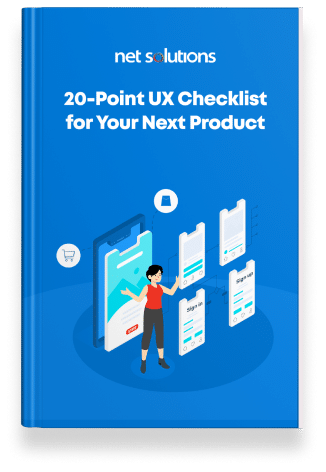
We respect your privacy. Your information is safe.
What Are User Personas?
User Personas are semi-fictional profiles of a company’s ideal customers, based on demographic and psychographic research. They usually include easy-to-remember names, like Dana Developer or Alex Admin. Yes, alliteration is a thing when it comes to user personas!
Once used exclusively by marketing departments to determine how to reach a target audience, user personas (also referred to as buyer personas) are now used by software development and design teams. After all, you should have a clear understanding of who you’re designing your products for before you create a single wireframe.
You may settle on one user persona as Hubspot did, or you may decide to identify multiple user personas. What’s vital is that your user personas should not conflict with one another, as they did with Hubspot’s “Mary Marketer” and “Ollie Owner.”
Also, note that user personas will inevitably change over time. The more you learn about your customers, the better informed you’ll be when designing and developing upcoming releases.
Why Create User Personas?
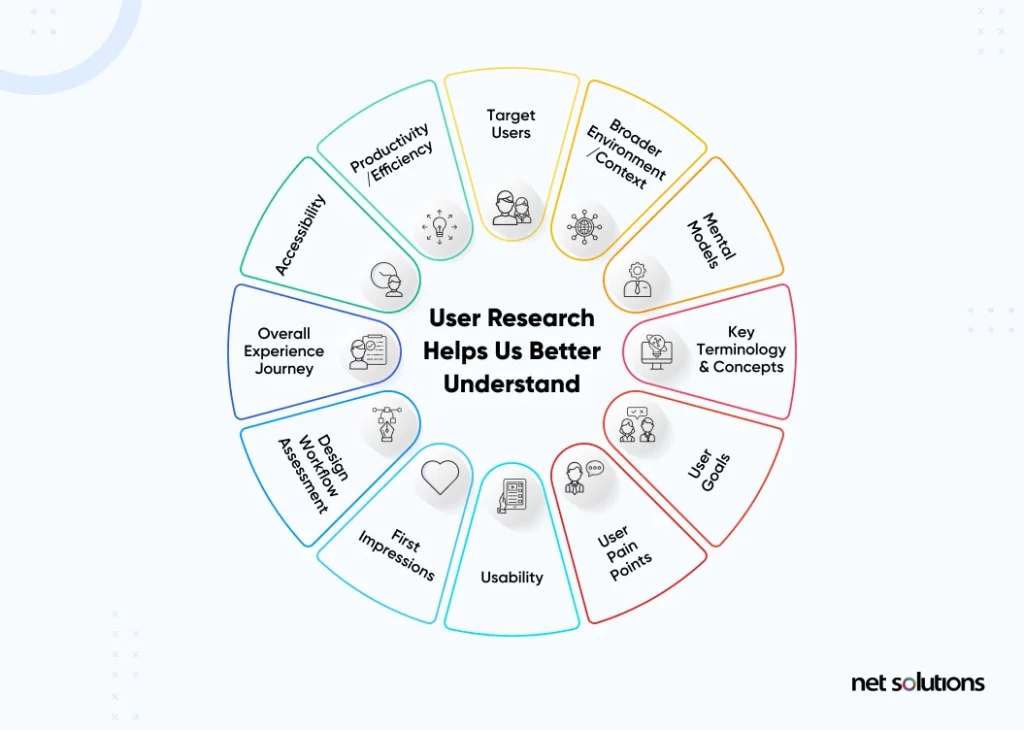
You may be wondering, why to create semi-fictional characters with clever names like “Mary Marketer” and “Ollie Owner?” Can’t you just say you’re targeting marketing professionals or business owners and move on?
Brian Halligan says that Hubspot’s user personas were critical for creating empathy surrounding those ideal users. They referred to Mary and Ollie regularly, as if they were real people because it allowed them to see the world from their ideal users’ perspectives. This helped them create a better product, and it made it easy to grasp the fact that Mary and Ollie’s needs and drives proved to be mutually exclusive.
2 Paths to Creating User Personas
It’s important to recognize that how you go about arriving at your user personas will differ depending on your budget. For example, when Adobe launches a new product, they’ll no doubt invest heavily in market research, focus groups, customer interviews, and more. This is a UX approach to user personas and product design.
A bootstrapped startup doesn’t have that luxury, but they can (and should) create personas with the information available to them—revising those personas as they learn more. They need to start with some understanding of who they want to target when building their Minimum Viable Product. They can go on to refine their personas (and their product) down the line, once they start surveying and interviewing actual customers.
This blog post will outline both approaches so you can plan your strategy based on your current situation.
How to Create User Personas (for Startups with a Minimal Budget)
If you have an idea for a software product, you almost certainly have a general idea of who you plan to target. For example, if you’re creating a dating app, you’re (hopefully) targeting single people, so that’s a start. That said, competition is fierce in the vast sea of dating apps, and you’ll need to narrow your focus quite a bit if you want to succeed.
What follows is a general guideline for creating a handful of user personas when you’re running a startup with virtually no marketing budget and no existing product. To guide you along, we’ll pretend we’re designing a hypothetical dating app called MindMelder. Our fictional founders’ initial idea is to create an app for Sci-Fi, role-playing, cosplay, and/or comic book fans, but they’re not 100% sure where to focus their efforts.
Keep in mind: This is not an idea we’ve validated. What follows is not actual research, but an example of the path you might take to validate an idea, identify a market, and create user personas for a new software product.
1. Market Research
The first step toward creating accurate buyer personas is to understand your market and validate your idea. Is your proposed niche large enough to even pursue? Are they willing to purchase your product? If not, there’s no point in building it.
Whether you’re a billion-dollar company or a scrappy startup, you’ll want to perform a combination of general market research (i.e., market analysis), qualitative research, and quantitative research. Here’s what that might look like.
a. General Market Research
Market analysis involves researching your competition, exploring potential customers, and assessing the size of your market. The first step, of course, is to perform a simple Google search for competitors. For MindMelder, our hypothetical dating app, we could search for terms like “Sci-Fi dating,” “Comic dating,” etc. This will bring up standalone sites with high domain authority, lists from affiliate marketers trying to sell these products via links, and other sources.
The next step is to use a tool like SEM Rush’s Market Explorer to find out what the current market, traffic, and competition looks like for the sites you’re potentially competing with. For example, from a “Comic Book Dating” search, we found three sites:
- NerdPassions.com
- ComicBookDating.com
- MatchGeeks.com
By entering those websites into Market Explorer, we received a complete competitive analysis that tells us:
- How hard it is to compete in this market (turns out, very difficult)
- Who the leader is in terms of traffic and growth
- Commonly associated keywords
- Other vital information
Let’s say, after doing the same thing with Sci-Fi, cosplay, and gaming-based dating apps, we ultimately decide that a narrow focus on comic book fans represents the strongest opportunity despite the competition. We would then proceed to qualitative research.
b. Qualitative Research
Large organizations with hefty marketing budgets might conduct focus groups, while startups might reach out to members of online communities to conduct interviews.
Needless to say, these informal interviews don’t amount to solid, scientific data. Nevertheless, they allow you to get in the head of your proposed target audience and ask them about their needs, drive, and frustrations. Letting them talk about their experiences will yield a ton of qualitative data. Ask them how they’ve gone about trying to solve the problem your product addresses and let them ramble! You can use this information to come up with survey questions for the quantitative research phase.
c. Quantitative Research
Once again, a large organization might outsource these surveys and produce scientific data with a small margin of error. Startups, on the other hand, have to work with the tools available to them.
If you haven’t launched your product yet, you can once again survey members of online communities. On the other hand, if you’ve already got a working product with existing customers, you can use tools like Hotjar to survey your visitors.
You can gather information about user demographics (e.g., age, gender, location, income, education) as well as psychographics (e.g., drives, interests, frustrations, lifestyle choices).
2. Explore Patterns in the Data
Now you’ve got a bunch of data, and it’s time to look for patterns. It may be tempting to look for demographic patterns alone—since those psychographic patterns can be harder to spot—but that’s often not the best approach.
Why does psychographics often matter more than demographics? An article in the BBC sums it up nicely. Prince Charles and Ozzy Osbourne fit the same demographic profile. Both are caucasian British males, born in 1948, who spend a lot of time in London. Yet, they have radically different interests and lifestyles.
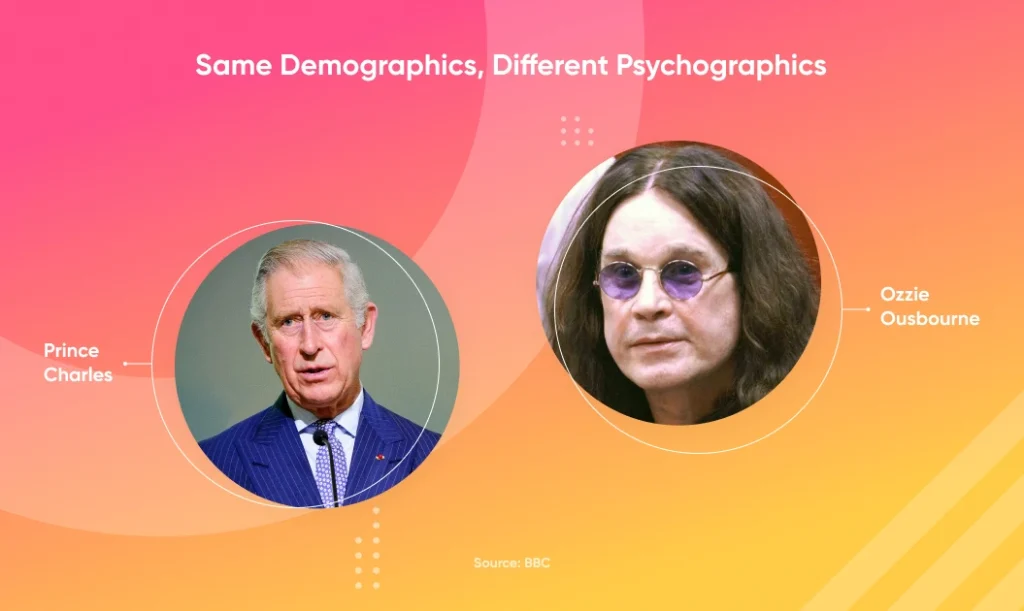
The BBC asks, “Would you really want to target them with the same ad?”
Of course, that’s not to say demographics don’t matter at all. They do matter, and in our hypothetical comic book dating app, they matter a great deal. After all, if you decide to target Gen-Zers just out of college, you probably don’t want your app flooded with recently divorced 50-year-olds.
Just know that while demographics have their place, psychographics (in many cases) prove to be a more valuable measure of who you want to target.
3. Create Your User Personas
Now it’s time to get creative, building profiles for each category of user you decide to target. At this point, you’ll need to walk a fine line between using your imagination and keeping each profile grounded in reality.
Give each persona a name, an age, a background, and a story—that’s the creative part—but don’t embellish too much or get too detailed. If you do that, you’ll end up narrowing your vision of the persona and exclude others who share similar goals and drives.
Each user persona should include the following:
- Name
- Photo
- Demographic profile
- Psychographic profile
- Goals
- Drives
- Needs
- Frustrations
- General bio
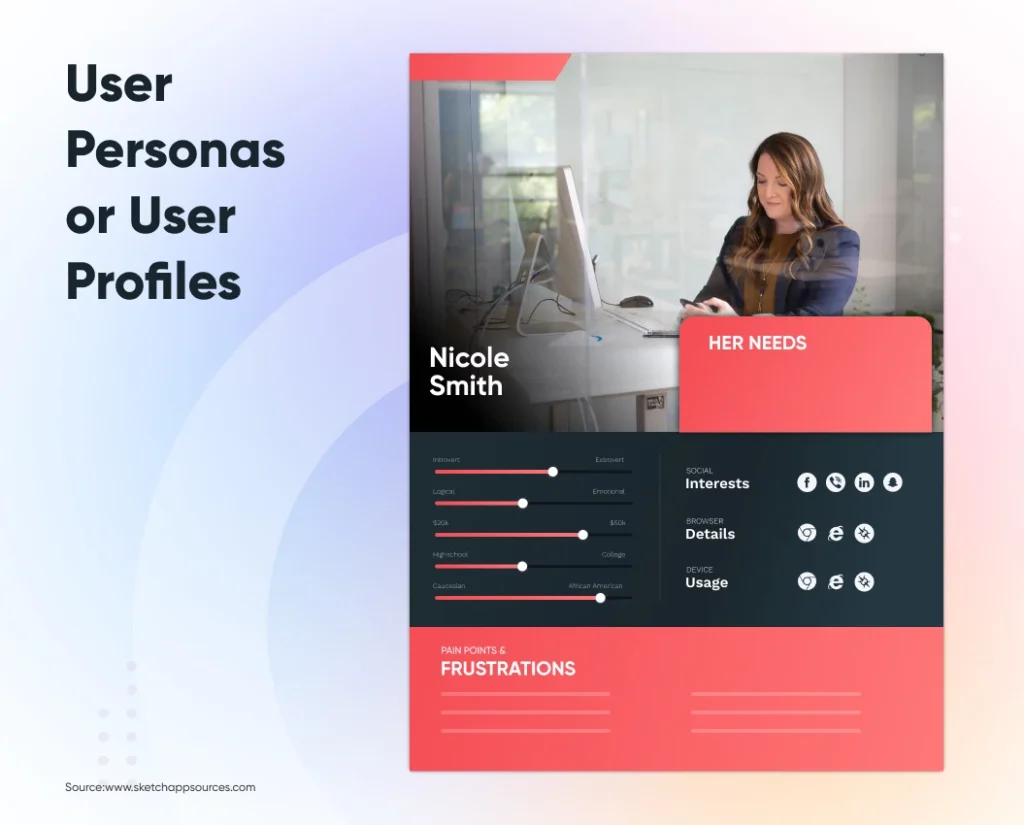
For example, for our imaginary dating app, you might start with two different user personas. One you might call Cosplay Carrie, the other you could call Introverted Ian. Both are in their 20’s, but Carrie is more social and engaged in live communities while Ian tends to socialize online.
Needless to say, there are likely a bunch of male Carries and female Ians out there, so you don’t want to be too tied to the gender component of the profile unless you see strong gender-based patterns. Again, the point is to empathize more with a personality that has specific drives, needs, and frustrations. It’s not about reducing anyone to a stereotype.
Now, let’s say your research reveals significant interest from the LGBT community. In this case, it would make a lot of sense to create separate profiles for those users, simply because same-sex online dating can be a very different experience. While sexual orientation doesn’t play a role in most buying decisions, it’s key to the customer journey for a dating app.
Ultimately, you’ll want to use your best judgment when deciding what to include in these semi-fictional profiles. Keep in mind, too, that you will update these profiles over time as you get to know your users better.
4. Share Your User Personas Company-wide
Users Personas aren’t just for designers, developers, and marketers. Once Hubspot identified their user personas, they made sure the entire organization was talking about these personas. The mission was to align everyone from Customer Success to Accounting to Customer Support, making sure they all knew why they were in business and who they were trying to serve.
5. Develop User Personas after Launch
Once you launch your product, usually in the form of an MVP, it’s time to start collecting data from your actual users. This data is invaluable because your audience is no longer theoretical. Now you have a chance to get real data by surveying (and interviewing) actual users.
You might launch your datapp thinking you’re going to target North Americans, and for some reason, your website ends up wildly popular in Brazil. Stranger things have happened! Remember Friendster, the original social media site? After Myspace took its place, it turned into a social gaming site and ended up dominating the Malaysian market for years.
The first thing you’d do after seeing the massive spike in Brazilian users (aside from creating a Brazilian-Portuguese version of the app) would be to update your user personas.
Now, do you double-down on the Brazilian market and forget about the English-speaking North American market? Do you try to balance both? Do you explore other opportunities in South America?
These are all complex strategy decisions. Solid data coupled with fleshed-out, evolving personas will help you make better choices when it comes to continued product development. And if you make wise decisions like Hubspot did, you could produce the next unicorn.
How to Create User Personas (for More Established Companies with a Decent Budget)
Established companies tend to take a different approach to create user personas and designing products based on those personas, as we mentioned above. Note that your company doesn’t need to be the size of any of the tech giants to employ this approach. You do, however, need a decent marketing budget to approach product creation with a Design Thinking approach.
What Is Design Thinking?
Digital experience design and user experience management are crucial components of Design Thinking, an approach to product creation that prioritizes understanding and empathizing with users’ needs and drives. By exploring patterns through research, digital experience design helps guide every step of the design process, including prototyping and modifying prototypes based on feedback. This ensures that the UI design is effective and intuitive, creating a seamless digital experience for users.
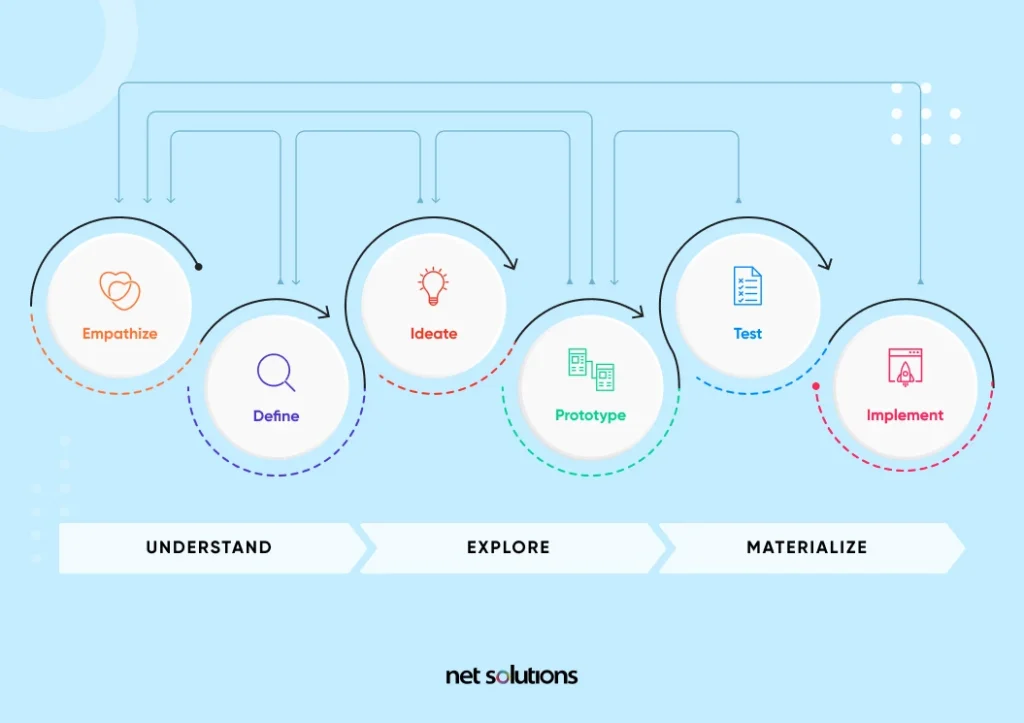
While a thorough discussion of Design Thinking is beyond the scope of this post, the following chart from Nielsen Norman Group will give you an idea of the general path Product departments take when they use the Design Thinking process.
User Persona creation happens during the “Define” stage, and those user personas inform every other element of the process—including the post-implementation phase, which brings us back to empathizing.
Step 1: User Research
Companies with a decent marketing budget conduct field research that they base their user personas on. This data can come from a combination of any of the following:
- Interviews
- Focus groups
- Surveys that produce both quantitative and qualitative data
Qualitative data helps these companies gain a general understanding of potential users’ needs, and it becomes the foundation for the survey questions that produce qualitative data. Very large companies often have their own in-house marketing research teams, while many others will outsource these projects to experts. These trained professionals produce scientifically valid research that will give you a strong understanding of those demographic and psychographic trends.
Step 2: Pinpoint Patterns in Behavior that Span the User Base
The next step is to identify trends in your data—again, something market research professionals (whether in-house or outsourced) know how to do. This typically involves noting how those behaviors and drives matched with different market segments, as well as noting how they differed.
The most prominent trends you discover will become the foundation of your user personas. You might identify one set of users that stands out and represent the greatest opportunity, or you might find quite a few. What’s important is that you allow the research to guide you, abandoning any preconceived ideas about who you imagined your ideal customers to be.
Step 3: Create Personas
Here’s where the start-up’s approach to user personas and the more established company’s approach converge.
Ascribe a name to each persona, along with age, background, and backstory. Again, don’t get too detailed, otherwise, you’ll narrow your vision of the customer group.
Include the following in each user persona:
- Name
- Photo
- Demographic profile
- Psychographic profile
- Goals
- Drives
- Needs
- Frustrations
- General bio
Now, if you do end up with multiple personas, consider the Design Thinking principle: “Design for the primary, accommodate the secondary.” Of course, you could end up with multiple secondaries, and that’s fine. What’s important is that you prioritize your various personas and let your primary user become your north star.
Step 4: Identify Scenarios where Your Top User Personas Interact with Your Product
Scenarios are imaginary situations that describe how a given persona will interact with your product as they make their way through the customer journey.
Now that you’ve identified each persona’s goals, mindset, drives, and pain points, you can pinpoint how they’ll interact with your product to achieve their goals and solve whatever problem(s) your product was built to address.
Write each scenario from the user’s perspective, providing a high-level description of how they’ll interact with your brand and your product. Spot potential pitfalls and look for ways to optimize the experience.
Step 5: Share and Explore Your Findings
Just like the startups, larger companies need to “socialize” their findings and gather input within the company. This can be a bit more challenging in a larger company due to the natural tendency for communication to break down and for departmental silos to form. It’s this potential disconnect that makes socializing your personas all the more vital.
Just as important as sharing your findings is soliciting feedback from different teams, team members, and key stakeholders. Did you overlook certain scenarios that could give you a more comprehensive understanding of how a given persona might interact with your products? That’s something you definitely want to know before you proceed.
Once you’ve nailed down your personas (for this stage), make sure the entire company understands them. The more your staff can empathize with your user personas, call them by name, and internalize their drives and goals, the better you’ll be able to serve them.
User Personas: Forever a Work in Progress
And that sums up our bird’s eye view of user persona creation, with guidance for both small startups and more established businesses. Of course, completing these steps won’t sum up your user persona efforts. User personas are constantly evolving.
Just as no software product is ever truly complete, no user persona remains static. As your products evolve to better serve your top user personas, you’ll have the opportunity to learn more about those customers—gathering feedback that expands your understanding of the customer journey. In turn, you’ll create more accurate personas and superior customer journey maps.
Throughout the lifetime of your business, the market will evolve, your competitors will change, and your user base may look radically different than it did when you first launched a given product. By continually studying and developing your user personas, you can create products that serve their needs, expanding your market share in the years to come.
Do you have an idea for a software product you want to bring to life? Net Solutions has designed and developed thousands of apps and web-based software products, and we can help you get started. Contact us today!





